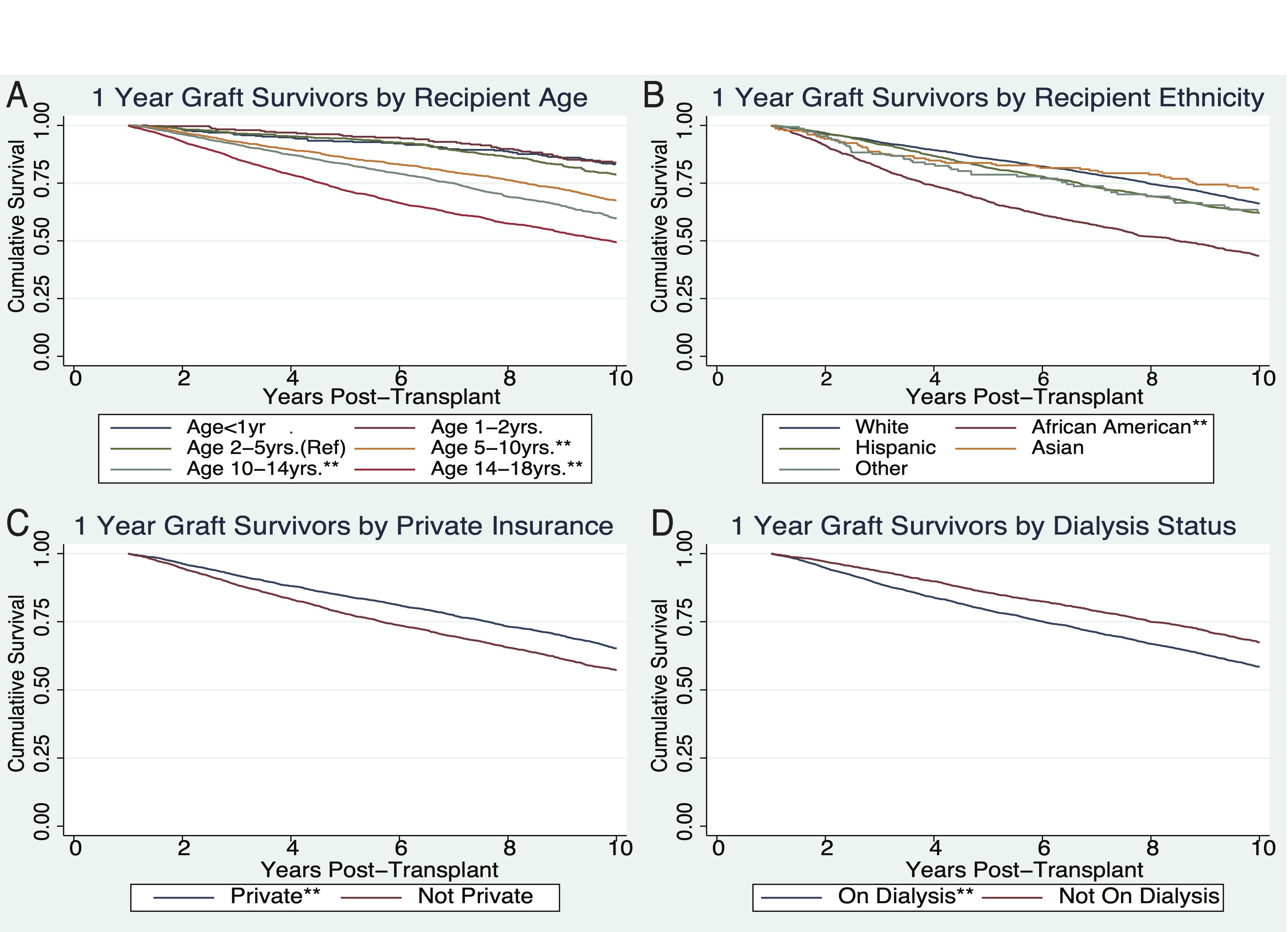Risk Factors Predicting Outcomes in Long-Term Pediatric Kidney Transplant Graft Survival
Baylor College of Medicine, Houston, TX
Meeting: 2021 American Transplant Congress
Abstract number: 81
Keywords: Kidney, Outcome, Pediatric, Risk factors
Topic: Clinical Science » Kidney » Kidney: Pediatrics
Session Information
Session Time: 6:00pm-7:00pm
 Presentation Time: 6:30pm-6:35pm
Presentation Time: 6:30pm-6:35pm
Location: Virtual
*Purpose: Pediatric kidney transplant recipients generally have good outcomes post-transplantation; however, the younger age and longer lifespan after transplantation in the pediatric population make understanding the multifactorial nature of long-term graft survival critical. This investigation analyzes factors associated with 10-year survival to identify areas for improvement in patient care.
*Methods: Kaplan-Meier with log-rank test as well as univariate and multivariate logistic regression methods were used to retrospectively analyze 7,785 kidney transplant recipients under the age of 18 years from January 1, 1998 until March 9, 2008 using United Network for Organ Sharing (UNOS) data. Our endpoint was death-censored 10-year graft survival after excluding recipients whose grafts failed within one-year of transplant.
*Results: Recipients aged 5-18 years had lower 10-year graft survival, which worsened as age increased: 5-9 years (Odds Ratio (OR) 0.66, CI 0.52-0.83), 10-14 years (OR 0.43, CI 0.33-0.55), 15-18 year (OR 0.34, CI 0.26-0.44). Recipient African American ethnicity (OR 0.67, CI 0.58-0.78) and Hispanic donor ethnicity (OR 0.82, CI 0.72-0.94) had worse outcomes than other donor and recipient ethnicities, as did patients on dialysis at the time of transplant (OR 0.82, CI 0.73-0.91). Recipient private insurance status (OR 1.35, CI 1.22-1.50) was protective for 10-year graft survival.
Fig.1 Kaplan-Meier survival function for four factors included in the study. (A) shows death-censored graft survival by recipient age. (B) shows death-censored graft survival by recipient ethnicity. (C) shows death-censored graft survival by insurance status. (D) shows death-censored graft survival by dialysis status. ** indicates p<0.001.
*Conclusions: By establishing the role of age, race, and insurance status on long-term graft survival, we hope to guide clinicians in identifying patients at high risk for graft failure. This study highlights the need for increased allocation of resources and medical care to reduce the disparity in outcomes for certain patient populations.
To cite this abstract in AMA style:
Anand A, Malik TH, Dunson J, McDonald MF, Christmann CR, Galvan NNguyen, O'Mahony C, Goss JA, Srivaths PR, Brewer ED, Rana A. Risk Factors Predicting Outcomes in Long-Term Pediatric Kidney Transplant Graft Survival [abstract]. Am J Transplant. 2021; 21 (suppl 3). https://atcmeetingabstracts.com/abstract/risk-factors-predicting-outcomes-in-long-term-pediatric-kidney-transplant-graft-survival/. Accessed December 14, 2025.« Back to 2021 American Transplant Congress

